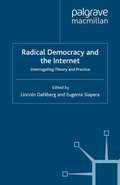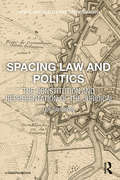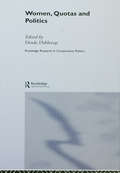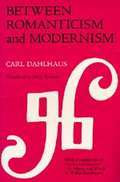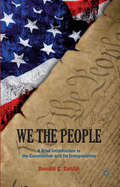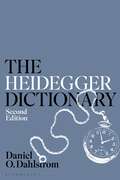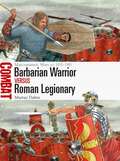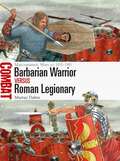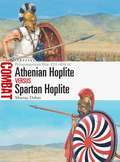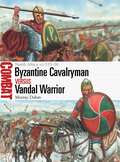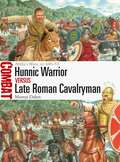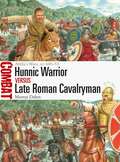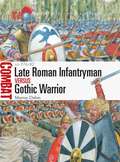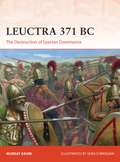- Table View
- List View
Spinoza: Fiction and Manipulation in Civic Education (SpringerBriefs in Education)
by Johan DahlbeckThis book is a philosophical enquiry into the educational consequences of Spinoza’s political theory. Spinoza’s political theory is of particular interest for educational thought as it brings together the normative aims of his ethical theory with his realistic depiction of human psychology and the ramifications of this for successful political governance. As such, this book aims to introduce the reader to Spinoza’s original vision of civic education, as a project that ultimately aims at the ethical flourishing of individuals, while being carefully tailored and adjusted to the natural limitations of human reason. Readers will benefit from a succinct introduction to Spinoza’s political philosophy and from an account of civic education that is based on careful exegetical work. It draws conclusions only hinted at in Spinoza’s own writings.
Radical Democracy and the Internet: Interrogating Theory and Practice
by L. Dahlberg E. SiaperaIn this systematic and mutual interrogation of radical democratic theory and Internet practice, contributors examine a range of democratic theories in relation to online communication and explore how such communication may advance democracy beyond what is conceptualized and practised within present liberal-capitalist political contexts.
Spacing Law and Politics: The Constitution and Representation of the Juridical
by Leif DahlbergExamining the inherent spatiality of law, both theoretically and as social practice, this book presents a genealogical account of the emergence and the development of the juridical. In an analysis that stretches from ancient Greece, through late antiquity and early modern and modern Europe, and on to the contemporary courtroom, it considers legal and philosophical texts, artistic and literary works, as well as judicial practices, in order to elicit and document a series of critical moments in the history of juridical space. Offering a more nuanced understanding of law than that found in traditional philosophical, political or social accounts of legal history, Dahlberg forges a critical account of the intimate relations between law and politics that shows how juridical space is determined and conditioned in ways that are integral to the very functioning – and malfunctioning – of law.
Spacing Law and Politics: The Constitution and Representation of the Juridical
by Leif DahlbergExamining the inherent spatiality of law, both theoretically and as social practice, this book presents a genealogical account of the emergence and the development of the juridical. In an analysis that stretches from ancient Greece, through late antiquity and early modern and modern Europe, and on to the contemporary courtroom, it considers legal and philosophical texts, artistic and literary works, as well as judicial practices, in order to elicit and document a series of critical moments in the history of juridical space. Offering a more nuanced understanding of law than that found in traditional philosophical, political or social accounts of legal history, Dahlberg forges a critical account of the intimate relations between law and politics that shows how juridical space is determined and conditioned in ways that are integral to the very functioning – and malfunctioning – of law.
Women, Quotas And Politics (Routledge Research In Comparative Politics #No. 10)
by Drude DahlerupThis is the first world-wide, comparative study of the controversial new trends of gender quotas now emerging in global politics, presenting a comprehensive overview of changes in women's parliamentary representation across the world. This is important reading for all those working to increase women's influence in politics, because it scrutinizes under what circumstances gender quotas do increase women's representation - and why they sometimes fail. These distinguished international scholars also show how gender balance in politics has become important to a nation's international image and why quotas are being introduced in many post-conflict countries. They present key case studies of Afghanistan, Iraq, Argentina, Sweden, South Africa, Belgium, covering almost all major regions of the world: Latin America, Africa, the Arab world, South Asia, the Balkans, The Nordic countries and Europe, New Zealand, Australia and the USA - and Rwanda, which in 2003 unexpectedly surpassed Sweden as the number one country in the world in terms of women's parliamentary representation. Using a comparative perspective, this book contains analyses of the discursive controversies around quotas; it gives an overview over various types of quotas in use from candidate quotas to reserved seat systems, and it throws light over the troublesome implementation process. When do gender quotas lead to actual increase in the number of women parliament? When are quotas merely a symbolic gesture? What does it imply to be elected as a 'quota woman'? Tackling these and many more key questions, this is a major new contribution to the field. Making an important contribution to our knowledge of gender politics worldwide, this book will be of interest to NGOs, students and scholars of democracy, policy-making, comparative politics and gender studies.
Women, Quotas And Politics (Routledge Research In Comparative Politics #No. 10)
by Drude DahlerupThis is the first world-wide, comparative study of the controversial new trends of gender quotas now emerging in global politics, presenting a comprehensive overview of changes in women's parliamentary representation across the world. This is important reading for all those working to increase women's influence in politics, because it scrutinizes under what circumstances gender quotas do increase women's representation - and why they sometimes fail. These distinguished international scholars also show how gender balance in politics has become important to a nation's international image and why quotas are being introduced in many post-conflict countries. They present key case studies of Afghanistan, Iraq, Argentina, Sweden, South Africa, Belgium, covering almost all major regions of the world: Latin America, Africa, the Arab world, South Asia, the Balkans, The Nordic countries and Europe, New Zealand, Australia and the USA - and Rwanda, which in 2003 unexpectedly surpassed Sweden as the number one country in the world in terms of women's parliamentary representation. Using a comparative perspective, this book contains analyses of the discursive controversies around quotas; it gives an overview over various types of quotas in use from candidate quotas to reserved seat systems, and it throws light over the troublesome implementation process. When do gender quotas lead to actual increase in the number of women parliament? When are quotas merely a symbolic gesture? What does it imply to be elected as a 'quota woman'? Tackling these and many more key questions, this is a major new contribution to the field. Making an important contribution to our knowledge of gender politics worldwide, this book will be of interest to NGOs, students and scholars of democracy, policy-making, comparative politics and gender studies.
Travelling images: Looking across the borderlands of art, media and visual culture (Rethinking Art's Histories)
by Anna DahlgrenThis book critically examines images in the borderlands of the art world, investigating relations between visual art and vernacular visual culture within different images communities from the 1870s to the present day. It concentrates on the mechanisms of such processes and their implications for the understanding of art and art-historical narratives. Merging perspectives from art history and visual culture studies with media studies, it fills a gap in the field of visual studies through its use of a diversity of images as prime sources. Where textual statements are scarce the book maps visual statements instead, demonstrating the potential of image studies. Consequently, it will be of great relevance to those interested in art and visual culture in modernity, as well as discourses of the notion of art and art history writing.
Travelling images: Looking across the borderlands of art, media and visual culture (Rethinking Art's Histories)
by Anna DahlgrenThis book critically examines images in the borderlands of the art world, investigating relations between visual art and vernacular visual culture within different images communities from the 1870s to the present day. It concentrates on the mechanisms of such processes and their implications for the understanding of art and art-historical narratives. Merging perspectives from art history and visual culture studies with media studies, it fills a gap in the field of visual studies through its use of a diversity of images as prime sources. Where textual statements are scarce the book maps visual statements instead, demonstrating the potential of image studies. Consequently, it will be of great relevance to those interested in art and visual culture in modernity, as well as discourses of the notion of art and art history writing.
Studies on the Origin of Harmonic Tonality
by Carl Dahlhaus Robert O. GjerdingenCarl Dahlhaus was without doubt the premier musicologist of the postwar generation, a giant whose recent death was mourned the world over. Translated here for the first time, this fundamental work on the development of tonality shows his complete mastery of the theory of harmony. In it Dahlhaus explains the modern concepts of harmony and tonality, reviewing in the process the important theories of Rameau, Sechter, Ftis, Riemann, and Schenker. He contrasts the familiar premises of chordal composition with the lesser known precepts of intervallic composition, the basis for polyphonic music in the late Middle Ages and Renaissance. Numerous quotations from theoretical treatises document how early music was driven forward not by progressions of chords but by simple progressions of intervals.Exactly when did composers transform intervallic composition into chordal composition? Modality into tonality? Dahlhaus provides extensive analyses of motets by Josquin, frottole by Cara and Tromboncino, and madrigals by Monteverdi to demonstrate how, and to what degree, such questions can be answered. In his bold speculations, in his magisterial summaries, in his command of eight centuries of music and writings on music, and in his deep understanding of European history and culture, Carl Dahlhaus sets a standard that will seldom be equalled.Originally published in 1990.The Princeton Legacy Library uses the latest print-on-demand technology to again make available previously out-of-print books from the distinguished backlist of Princeton University Press. These editions preserve the original texts of these important books while presenting them in durable paperback and hardcover editions. The goal of the Princeton Legacy Library is to vastly increase access to the rich scholarly heritage found in the thousands of books published by Princeton University Press since its founding in 1905.
Between Romanticism and Modernism: Four Studies in the Music of the Later Nineteenth Century (California Studies In 19th-century Music #1)
by Carl Dahlhaus Mary WhittallCarl Dahlhaus here treats Nietzsche's youthful analysis of the contradictions in Wagner's doctrine (and, more generally, in romantic musical aesthetics); the question of periodicization in romantic and neo-romantic music; the underlying kinship between Brahms's and Wagner's responses to the central musical problems of their time; and the true significance of musical nationalism. Included in this volume is Walter Kauffman's translation of the previously unpublished fragment, "On Music and Words," by the young Nietzsche.
We the People: A Brief Introduction to the Constitution and Its Interpretation
by D. DahlinDahlin takes an analytical approach to existing Constitutional scholarship and presents a limited number of landmark Supreme Court decisions in a way that makes this important material accessible to an undergraduate academic audience.
The Heidegger Dictionary (Bloomsbury Philosophy Dictionaries)
by Daniel O. DahlstromWhat does Heidegger mean by 'Dasein'? What does he say in Being and Time? How does his phenomenology differ to that of his teacher, Husserl? Answering these questions and more, The Heidegger Dictionary provides students with all the tools they need to better understand one of the most influential yet complex philosophers of the 20th century. Easy to use and navigate, this book is divided into four main parts, covering Heidegger's life, ideas and innovative terminology, related thinkers, and published and unpublished works. Updated with significant new material throughout, the 2nd edition has been expanded to engage with the latest Heidegger scholarship, and features:· A new A-Z section on Heidegger's influences, contemporaries, and commentators, from Martin Luther to Hannah Arendt and Jean-Paul Sartre· Summaries of Heidegger's entire 102-volume Collected Works, including the Black Notebooks · Expanded coverage of Heidegger's thought, with straightforward explanations of his views on modernity, science and more · An updated glossary of Heidegger's key terms, listing all the major translation alternatives alongside his original GermanProviding a road-map to how Heidegger's ideas developed over his long philosophical career, this is an essential research companion for all students of Heidegger, from beginners to the advanced.
The Heidegger Dictionary (Bloomsbury Philosophy Dictionaries)
by Professor Daniel O. DahlstromWhat does Heidegger mean by 'Dasein'? What does he say in Being and Time? How does his phenomenology differ to that of his teacher, Husserl? Answering these questions and more, The Heidegger Dictionary provides students with all the tools they need to better understand one of the most influential yet complex philosophers of the 20th century. Easy to use and navigate, this book is divided into four main parts, covering Heidegger's life, ideas and innovative terminology, related thinkers, and published and unpublished works. Updated with significant new material throughout, the 2nd edition has been expanded to engage with the latest Heidegger scholarship, and features:· A new A-Z section on Heidegger's influences, contemporaries, and commentators, from Martin Luther to Hannah Arendt and Jean-Paul Sartre· Summaries of Heidegger's entire 102-volume Collected Works, including the Black Notebooks · Expanded coverage of Heidegger's thought, with straightforward explanations of his views on modernity, science and more · An updated glossary of Heidegger's key terms, listing all the major translation alternatives alongside his original GermanProviding a road-map to how Heidegger's ideas developed over his long philosophical career, this is an essential research companion for all students of Heidegger, from beginners to the advanced.
Barbarian Warrior vs Roman Legionary: Marcomannic Wars AD 165–180 (Combat #76)
by Dr Murray DahmThis engrossing book pits the legionaries of Imperial Rome against their Germanic and Sarmatian opponents in the 2nd century AD.Shortly after Marcus Aurelius came to power in AD 161, the Roman Empire was racked by a series of military crises. While unrest in Britain and a new war with Parthia were swiftly dealt with, the invasion of Roman territory by the Chatti and Chauci peoples heralded a resurgent threat from the empire's European neighbours. Soon the Marcomanni and the Quadi, as well as the Dacians and the Sarmatian Iazyges, would attack the Romans in a series of savage conflicts that continued until AD 175 and would see the first invasion of Roman Italy since the beginning of the 1st century BC.In this book, the two sides' objectives, weapons and equipment and fighting styles are assessed and compared in the context of three featured battles: Carnuntum (170), where a Roman legion was vanquished and Italy invaded; the 'Battle on the Ice' (172), where the Romans fought their lighter-armed Iazyges opponents on the frozen Danube; and the so-called 'Miracle of the Rain' (174), during which a trapped Roman force facing annihilation was able to defeat numerically superior Germanic forces. Photographs, specially commissioned artwork plates and mapping complement the authoritative text in this engrossing study of Imperial Rome at war.
Barbarian Warrior vs Roman Legionary: Marcomannic Wars AD 165–180 (Combat #76)
by Dr Murray DahmThis engrossing book pits the legionaries of Imperial Rome against their Germanic and Sarmatian opponents in the 2nd century AD.Shortly after Marcus Aurelius came to power in AD 161, the Roman Empire was racked by a series of military crises. While unrest in Britain and a new war with Parthia were swiftly dealt with, the invasion of Roman territory by the Chatti and Chauci peoples heralded a resurgent threat from the empire's European neighbours. Soon the Marcomanni and the Quadi, as well as the Dacians and the Sarmatian Iazyges, would attack the Romans in a series of savage conflicts that continued until AD 175 and would see the first invasion of Roman Italy since the beginning of the 1st century BC.In this book, the two sides' objectives, weapons and equipment and fighting styles are assessed and compared in the context of three featured battles: Carnuntum (170), where a Roman legion was vanquished and Italy invaded; the 'Battle on the Ice' (172), where the Romans fought their lighter-armed Iazyges opponents on the frozen Danube; and the so-called 'Miracle of the Rain' (174), during which a trapped Roman force facing annihilation was able to defeat numerically superior Germanic forces. Photographs, specially commissioned artwork plates and mapping complement the authoritative text in this engrossing study of Imperial Rome at war.
Athenian Hoplite vs Spartan Hoplite: Peloponnesian War 431–404 BC (Combat)
by Murray DahmThe Peloponnesian War (431–404 BC), waged between Athens and Sparta and their respective allies, involved some of the most important developments in ancient warfare. A life-and-death struggle between the two most powerful Greek city-states in the wake of their combined successes against the Persian invasion of Xerxes in 480–479 BC, the conflict dragged in communities from all over the Greek world on one side or the other. Ranging from the Black Sea to Sicily, the war saw the first recorded widespread use of light-armed troops, reserves, the deep phalanx, and other ideas important for the development of Western warfare into the 4th century BC, such as strategic thinking. It also revealed lessons (some learned and some not) with respect to the strengths and weaknesses of hoplite warfare and the various states in Greece. Featuring full-color artwork and drawing upon an array of sources, this study of three pivotal clashes between Spartan and Athenian hoplite forces during the Peloponnesian War highlights all of these developments and lessons.
Athenian Hoplite vs Spartan Hoplite: Peloponnesian War 431–404 BC (Combat)
by Murray DahmThe Peloponnesian War (431–404 BC), waged between Athens and Sparta and their respective allies, involved some of the most important developments in ancient warfare. A life-and-death struggle between the two most powerful Greek city-states in the wake of their combined successes against the Persian invasion of Xerxes in 480–479 BC, the conflict dragged in communities from all over the Greek world on one side or the other. Ranging from the Black Sea to Sicily, the war saw the first recorded widespread use of light-armed troops, reserves, the deep phalanx, and other ideas important for the development of Western warfare into the 4th century BC, such as strategic thinking. It also revealed lessons (some learned and some not) with respect to the strengths and weaknesses of hoplite warfare and the various states in Greece. Featuring full-color artwork and drawing upon an array of sources, this study of three pivotal clashes between Spartan and Athenian hoplite forces during the Peloponnesian War highlights all of these developments and lessons.
Byzantine Cavalryman vs Vandal Warrior: North Africa AD 533–36 (Combat)
by Murray DahmFully illustrated, this enthralling study explores how the Vandals in North Africa attempted to defend their kingdom against the resurgent Byzantine Empire during 533–36.In AD 533, the Byzantine Emperor Justinian I launched the first of his campaigns to reconquer the Western Roman Empire. This effort began in North Africa (modern Algeria and Tunisia), targeting the Vandal kingdom established there a century earlier, which also included Sardinia, Corsica and the Balearic Islands. Featuring full-colour artwork and mapping alongside carefully chosen archive illustrations, this book shows how the Byzantine general Belisarius established his formidable reputation in the lightning-fast campaign that ensued, exploring the origins, tactics and reputation of the two sides' forces as they fought for control of North Africa.The landing of Belisarius' forces took the Vandal king, Gelimer, completely by surprise; in September 533 the two sides met in battle near Carthage in an encounter known to posterity as Ad Decimum, with Gelimer ambitiously attempting to trap Belisarius' forces as they advanced. In December, the two sides fought again in a momentous clash at Tricamarum, where the fate of Gelimer's regime would be determined. A third battle ensued in 536, when the rebel Stotzas' Byzantine and Vandal troops confronted Belisarius' forces, the outcome sealing the Byzantine general's standing as the foremost soldier of his age.Featuring specially commissioned artwork and mapping alongside archive illustrations and photographs, this vivid account compares and assesses the two sides' fighting men as they vied for supremacy in North Africa.
Byzantine Cavalryman vs Vandal Warrior: North Africa AD 533–36 (Combat)
by Murray DahmFully illustrated, this enthralling study explores how the Vandals in North Africa attempted to defend their kingdom against the resurgent Byzantine Empire during 533–36.In AD 533, the Byzantine Emperor Justinian I launched the first of his campaigns to reconquer the Western Roman Empire. This effort began in North Africa (modern Algeria and Tunisia), targeting the Vandal kingdom established there a century earlier, which also included Sardinia, Corsica and the Balearic Islands. Featuring full-colour artwork and mapping alongside carefully chosen archive illustrations, this book shows how the Byzantine general Belisarius established his formidable reputation in the lightning-fast campaign that ensued, exploring the origins, tactics and reputation of the two sides' forces as they fought for control of North Africa.The landing of Belisarius' forces took the Vandal king, Gelimer, completely by surprise; in September 533 the two sides met in battle near Carthage in an encounter known to posterity as Ad Decimum, with Gelimer ambitiously attempting to trap Belisarius' forces as they advanced. In December, the two sides fought again in a momentous clash at Tricamarum, where the fate of Gelimer's regime would be determined. A third battle ensued in 536, when the rebel Stotzas' Byzantine and Vandal troops confronted Belisarius' forces, the outcome sealing the Byzantine general's standing as the foremost soldier of his age.Featuring specially commissioned artwork and mapping alongside archive illustrations and photographs, this vivid account compares and assesses the two sides' fighting men as they vied for supremacy in North Africa.
Hunnic Warrior vs Late Roman Cavalryman: Attila's Wars, AD 440–53 (Combat)
by Murray DahmRoman and Hunnic fighting men are assessed and compared in this fully illustrated study of Attila's bid to conquer Europe in the 5th century AD.The Huns burst on to the page of western European history in the 4th century AD. Fighting mostly on horseback, the Huns employed sophisticated tactics that harnessed the formidable power of their bows; they also gained a reputation for their fighting prowess at close quarters. Facing the Huns, the Roman Army fielded a variety of cavalry types, from heavily armed and armoured clibanarii and cataphractii to horse archers and missile cavalry. Many of these troops were recruited from client peoples or cultures, including the Huns themselves. After carving out a polyglot empire in eastern and central Europe, the Huns repeatedly invaded Roman territory, besieging the city of Naissus in 443. With Constantinople itself threatened, the Romans agreed to pay a huge indemnity. In 447, Attila re-entered Roman territory, confronting the Romans at the battle of the Utus in Bulgaria. The Huns besieged Constantinople, but were unable to take the city. In 451, after Hunnic forces invaded the Western Roman Empire, an army led by the Roman general Aetius pursed the invaders, bringing the Huns to battle at the Catalaunian Plains.Featuring specially commissioned artwork and maps, this study examines the origins, fighting methods and reputation of the two sides' cavalry forces, with particular reference to the siege of Naissus, the battle of the Utus and the climactic encounter at the Catalaunian Plains.
Hunnic Warrior vs Late Roman Cavalryman: Attila's Wars, AD 440–53 (Combat)
by Murray DahmRoman and Hunnic fighting men are assessed and compared in this fully illustrated study of Attila's bid to conquer Europe in the 5th century AD.The Huns burst on to the page of western European history in the 4th century AD. Fighting mostly on horseback, the Huns employed sophisticated tactics that harnessed the formidable power of their bows; they also gained a reputation for their fighting prowess at close quarters. Facing the Huns, the Roman Army fielded a variety of cavalry types, from heavily armed and armoured clibanarii and cataphractii to horse archers and missile cavalry. Many of these troops were recruited from client peoples or cultures, including the Huns themselves. After carving out a polyglot empire in eastern and central Europe, the Huns repeatedly invaded Roman territory, besieging the city of Naissus in 443. With Constantinople itself threatened, the Romans agreed to pay a huge indemnity. In 447, Attila re-entered Roman territory, confronting the Romans at the battle of the Utus in Bulgaria. The Huns besieged Constantinople, but were unable to take the city. In 451, after Hunnic forces invaded the Western Roman Empire, an army led by the Roman general Aetius pursed the invaders, bringing the Huns to battle at the Catalaunian Plains.Featuring specially commissioned artwork and maps, this study examines the origins, fighting methods and reputation of the two sides' cavalry forces, with particular reference to the siege of Naissus, the battle of the Utus and the climactic encounter at the Catalaunian Plains.
Late Roman Infantryman vs Gothic Warrior: AD 376–82 (Combat)
by Murray DahmRavaged by civil war and pressure from the Huns to the east, in late summer AD 376 the Gothic tribe of the Theruingi – up to 200,000 people under their leader Fritigern – gathered on the northern bank of the River Danube and asked the Eastern Roman emperor, Valens, for asylum within the empire. After agreeing to convert to Arian Christianity and enrol in the Roman Army, the Goths were allowed to cross the Danube and settle in the province of Thrace. Far more people crossed the Danube than the Romans expected, however, and with winter approaching, the local Roman commander, Lupicinus, lacked the resources to feed the newcomers and did not possess sufficient troops to control them. Treated poorly and running out of food, the Goths very quickly lost faith in the Roman promises. Meanwhile, other Gothic tribes also sought permission to cross the Danube. The Greuthungi were refused permission, but soon learned that local Roman garrisons had been depleted to supervise the march of the Theruingi to the town of Marcianopolis, close to the eastern shore of the Black Sea. Taking advantage of this, the Greuthungi also entered Roman territory. Camping outside Marcianopolis, Lupicinus denied the Goths access to the town's food stores, provoking the Theruingi to begin skirmishing with the Roman troops. Fritigern convinced Lupicinus to let the Gothic leaders go and calm their people, but they did nothing to quell the warlike temper of his warriors. Lupicinus summoned troops to him, but in late 376 these Roman forces were defeated – the first of several defeats for the Romans that would culminate in the fateful battle of Adrianople in August 378, at which Roman forces led by the emperor himself confronted the Gothic host. The aftermath and repercussions of Adrianople have been much debated, but historians agree that it marks a decisive moment in the history of the Roman world. This fully illustrated book investigates the fighting men of both sides who clashed at the battles of Marcianopolis, Ad Salices and Adrianople, as the fate of the Western Roman Empire hung in the balance.
Late Roman Infantryman vs Gothic Warrior: AD 376–82 (Combat)
by Murray DahmRavaged by civil war and pressure from the Huns to the east, in late summer AD 376 the Gothic tribe of the Theruingi – up to 200,000 people under their leader Fritigern – gathered on the northern bank of the River Danube and asked the Eastern Roman emperor, Valens, for asylum within the empire. After agreeing to convert to Arian Christianity and enrol in the Roman Army, the Goths were allowed to cross the Danube and settle in the province of Thrace. Far more people crossed the Danube than the Romans expected, however, and with winter approaching, the local Roman commander, Lupicinus, lacked the resources to feed the newcomers and did not possess sufficient troops to control them. Treated poorly and running out of food, the Goths very quickly lost faith in the Roman promises. Meanwhile, other Gothic tribes also sought permission to cross the Danube. The Greuthungi were refused permission, but soon learned that local Roman garrisons had been depleted to supervise the march of the Theruingi to the town of Marcianopolis, close to the eastern shore of the Black Sea. Taking advantage of this, the Greuthungi also entered Roman territory. Camping outside Marcianopolis, Lupicinus denied the Goths access to the town's food stores, provoking the Theruingi to begin skirmishing with the Roman troops. Fritigern convinced Lupicinus to let the Gothic leaders go and calm their people, but they did nothing to quell the warlike temper of his warriors. Lupicinus summoned troops to him, but in late 376 these Roman forces were defeated – the first of several defeats for the Romans that would culminate in the fateful battle of Adrianople in August 378, at which Roman forces led by the emperor himself confronted the Gothic host. The aftermath and repercussions of Adrianople have been much debated, but historians agree that it marks a decisive moment in the history of the Roman world. This fully illustrated book investigates the fighting men of both sides who clashed at the battles of Marcianopolis, Ad Salices and Adrianople, as the fate of the Western Roman Empire hung in the balance.
Leuctra 371 BC: The Destruction of Spartan Dominance (Campaign)
by Murray DahmThe battle of Leuctra, fought in early July in 371 BC was one of the most important battles ever to be fought in the ancient world. Not only did it see the destruction of the Spartan dominance of Greece, it also introduced several tactical innovations which are still studied and emulated to this day. Sparta's hegemony of Greece (which had been in effect since the Persian wars of 480/79 and especially since the Peloponnesian War in 431-404 BC) was wiped away in a single day of destruction. Sparta would never recover from the losses in manpower which were suffered at Leuctra. Sparta's defeat created a power vacuum in Greece which several states attempted to fill (the Theban Hegemony and the resurgence of Athens) and gave rise to the dominance of Macedon in the 350s when Macedon would conquer Greece in 338 BC at the battle of Chaeronea. None of which would have been possible without the events at Leuctra. The Theban phalanx at Leuctra, with its great depth of 50 ranks introduced new tactical thinking in Greek warfare and this thinking eventually led to the Macedonian phalanx of Philip and Alexander which conquered Greece and the Persian Empire less than 40 years later. The Theban commander at Leuctra, Epaminondas, also introduced the idea of drawing up his forces in echelon and fighting with a refused flank – something Alexander emulated in all of his major battles and which has been attempted at countless battles since.The importance of the battle of Leuctra cannot be underestimated. This superbly illustrated title gives the reader a detailed understanding of this epic clash of forces, what led to it, its commanders, sources and the consequences it had for future civilizations.
Leuctra 371 BC: The Destruction of Spartan Dominance (Campaign #363)
by Murray DahmThe battle of Leuctra, fought in early July in 371 BC was one of the most important battles ever to be fought in the ancient world. Not only did it see the destruction of the Spartan dominance of Greece, it also introduced several tactical innovations which are still studied and emulated to this day. Sparta's hegemony of Greece (which had been in effect since the Persian wars of 480/79 and especially since the Peloponnesian War in 431-404 BC) was wiped away in a single day of destruction. Sparta would never recover from the losses in manpower which were suffered at Leuctra. Sparta's defeat created a power vacuum in Greece which several states attempted to fill (the Theban Hegemony and the resurgence of Athens) and gave rise to the dominance of Macedon in the 350s when Macedon would conquer Greece in 338 BC at the battle of Chaeronea. None of which would have been possible without the events at Leuctra. The Theban phalanx at Leuctra, with its great depth of 50 ranks introduced new tactical thinking in Greek warfare and this thinking eventually led to the Macedonian phalanx of Philip and Alexander which conquered Greece and the Persian Empire less than 40 years later. The Theban commander at Leuctra, Epaminondas, also introduced the idea of drawing up his forces in echelon and fighting with a refused flank – something Alexander emulated in all of his major battles and which has been attempted at countless battles since.The importance of the battle of Leuctra cannot be underestimated. This superbly illustrated title gives the reader a detailed understanding of this epic clash of forces, what led to it, its commanders, sources and the consequences it had for future civilizations.

